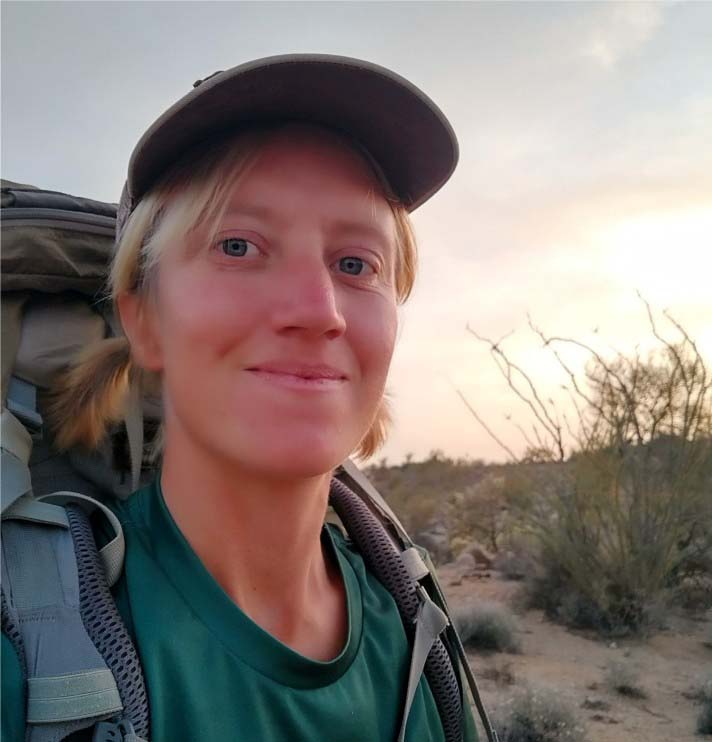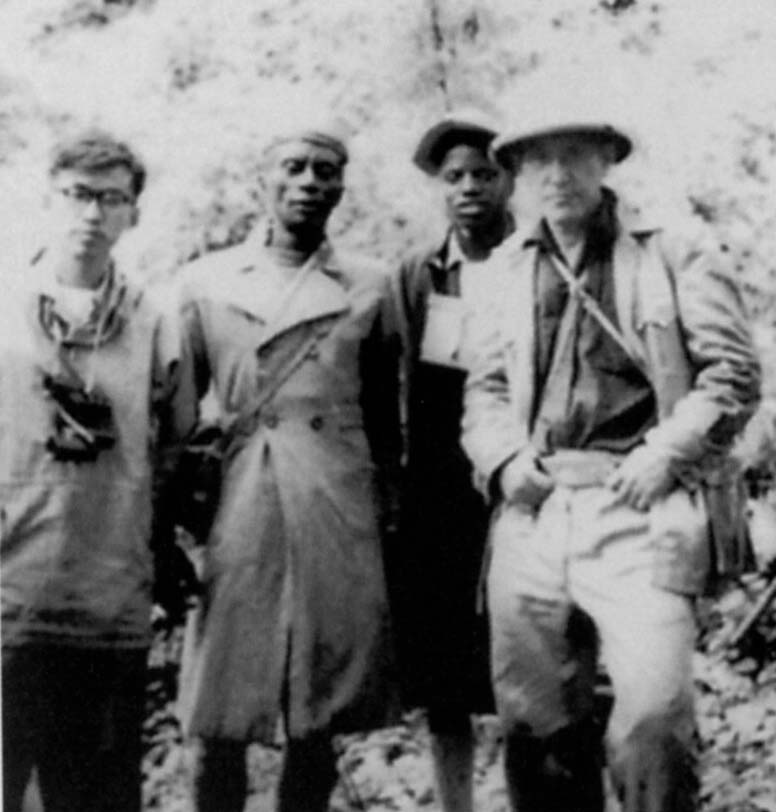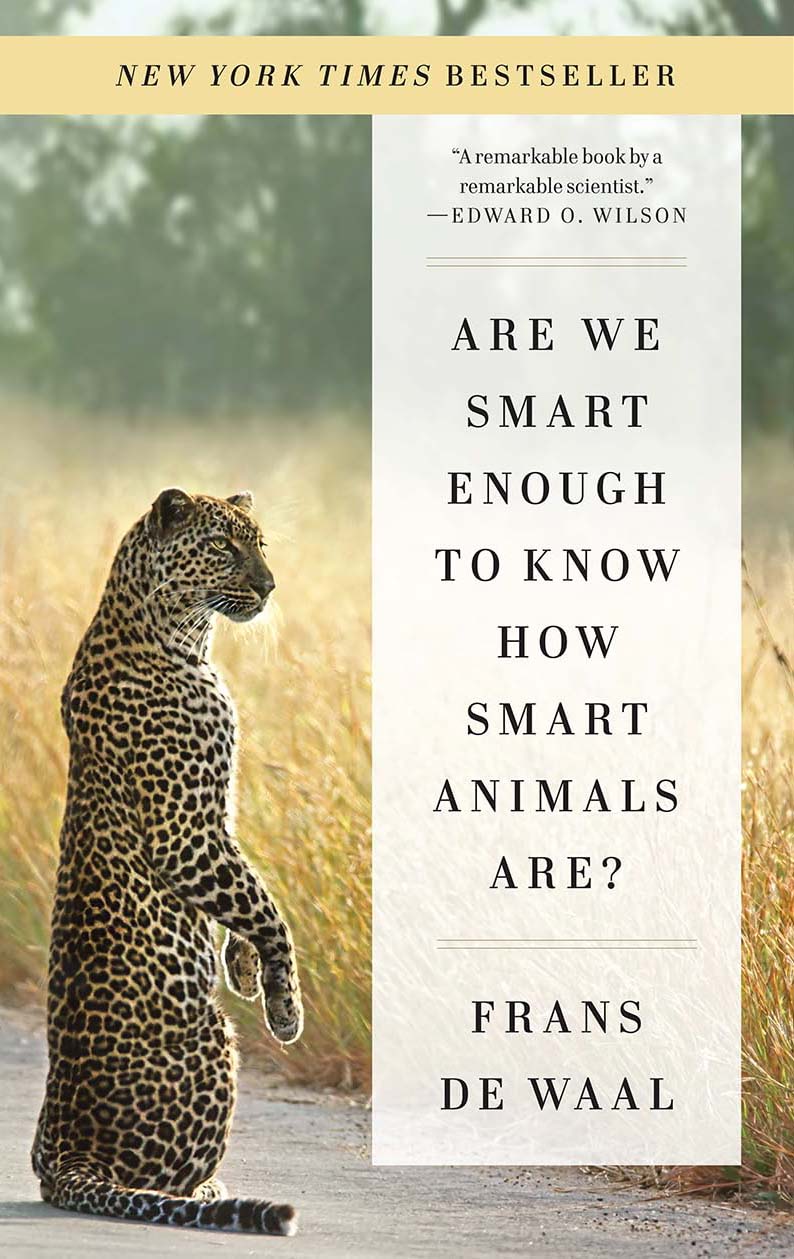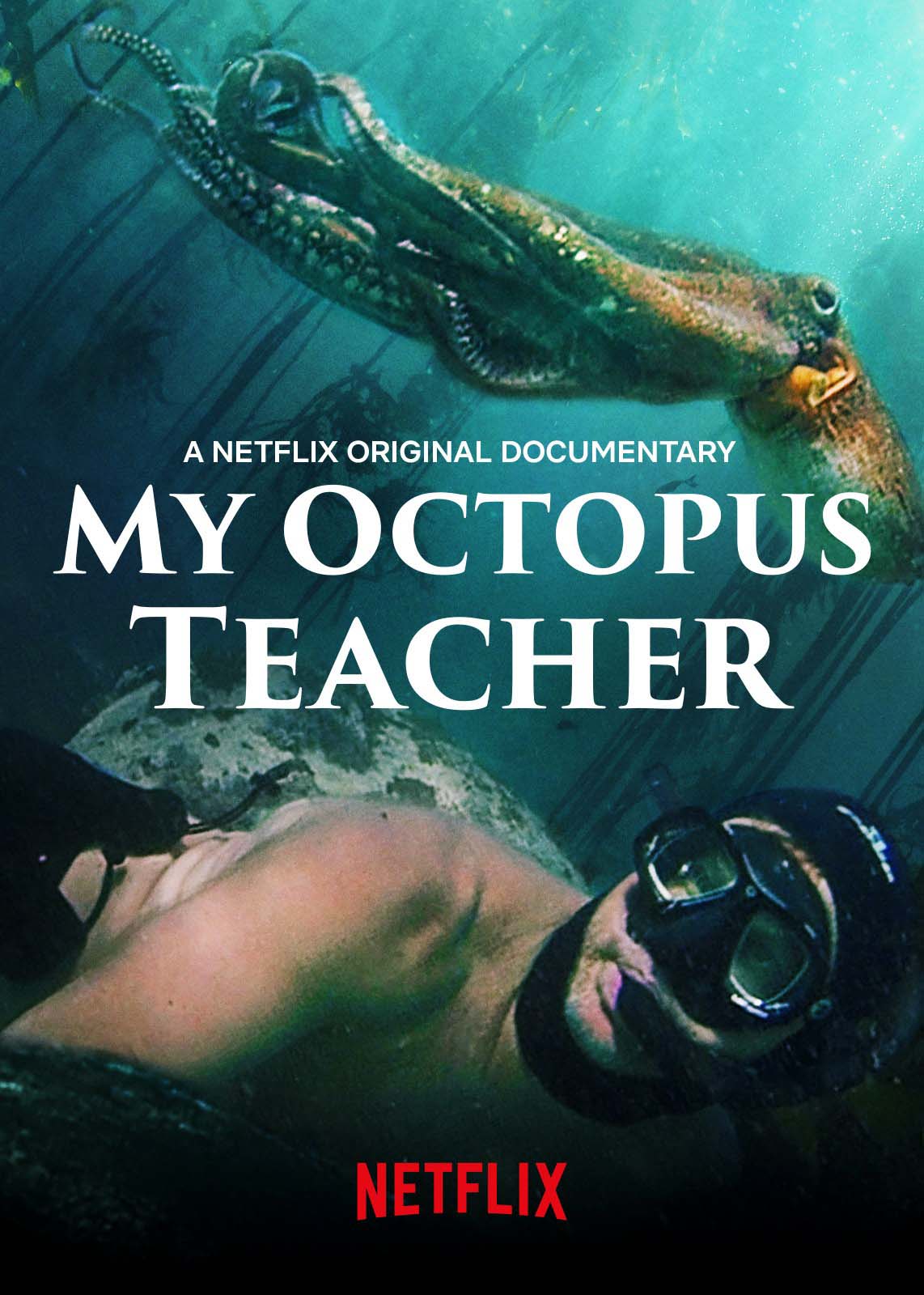Maria Goller, PhD

1 Maria Goller
Academia trains people to have an anthropocentric view of the world and killing animals for biological research is an unfortunate consequence. An unspoken distinction is made between us and them, setting ourselves apart from all other organisms. Throughout the history of biology, many scientists viewed other animals as little more than automata with a set of predetermined behaviors. This belief was prevalent among mid-century researchers and is still widespread, though a little less rigid, today. It is not surprising that many scientists view animals as strange beings with less value. The process of othering is ingrained in humanity, with those who are different labeled as inferior, strange, or alien.
Unfortunately, this elitist ideology implies that we have the right to harm animals to advance our knowledge. Contemporary scientist explorers in the film Explorer: The Last Tepui had no qualms about placing living animals in bags to suffocate in the name of discovery. Museums still actively kill animals for their collections although technology provides alternative nonlethal methods to catalogue diversity.

Some scientists, like myself, study the behavior and ecology of wild animals with little to no interference in their lives. Other scientists capture and keep animals in the lab for a time and then release them back into the wild. Still other scientists do invasive experiments, kill animals, and/or keep animals in captivity until they die. Invasive research involves deliberate physical access to an individual’s body through, for example, incision or injection, and has been widespread in biology for hundreds of years. The study of physiology is not kind to small animals. My father did surgery and dissections on birds to answer questions about how they produce and manipulate song. He felt his research justified the harm and while he values birds, he did not value them enough to favor individual lives over scientific discovery. Even scientists who do not kill animals themselves may be supportive of harmful research and assign little value to animal lives.
Current biological thought is skeptical of animal capability. While doubt is an important element of science, often skepticism pushes researchers to value controlled experiments over observational studies. In graduate school I was in a group of professors, post-docs, and students who met to discuss scientific papers about animal behavior. Most members of the group only believed something about animals if it was published in a paper. One week, the group marveled at a paper reporting that individuals of a particular bird species recognize each other. Something as fundamental to sociality as individual recognition was thought of as ‘too complex’ for birds until they read about it. This thinking is short-sighted for many reasons, perhaps most egregiously because published biological knowledge is only a small slice of humanity’s understanding of biology, which is itself by no means comprehensive. Unfortunately, short-sightedness is a by-product of biologists being taught that skepticism and objectivity are requirements for success. Academia is a system where knowledge is transferred through publications, which must pass review by established scientists who were taught to adhere to certain standards. Other ways of knowing are excluded and criticized, which is why many biologists have an inveterate dislike of anecdotal evidence. Ecological or behavioral anecdotes are invalid because they are observations without a solid foundation of rigorous and controlled experimentation.
When I was an undergraduate research fellow, my advisor said I would be a good scientist only if I started doing invasive research. She was referring to my refusal to collect blood from wild lizards by jamming a tiny tube into the sensitive skin around their eyes. In addition, before each individual was released back into the rocks of their home, I was supposed to clip off some of their toes. No one had qualms about toe removal because it was a convenient method of identifying individuals. For a snake study, my advisor caught gravid (pregnant) female snakes and brought them into the lab. Once born, the babies were counted, weighed, and raced against each other before they were bagged and thrown in a freezer to die. Death solely to discover the reproductive success of the mother snakes, who spent their lives in tiny aquaria. While I ended up doing independent observational lizard research with nothing but an infrared camera, I could not forget what I had experienced. After graduating, I spent two refreshing years surveying birds in remote areas. Eventually, I decided I needed a second degree to become an effective conservationist. I told myself I would observe and record unconfined wild birds singing, and get a degree without reliving my undergraduate ordeal. Although I chose an advisor who did field research on wild birds, my optimism was naive.
During my graduate degree, I had to work as a graduate teaching assistant (TA) to get paid. I was first assigned to teach the Biology 101 lab, which involved one dissection. Live, pet rats were provided by the psychology department and kept in the supply room. Shortly before each lab, the TA for that section was expected to enter the supply room and gas six rats to death. Rats talk to each other in ultrasonic voices we cannot hear and have a sense of smell far better than ours (they’ve been trained to detect tuberculosis and cancer by scent alone!), so the surviving rats were aware of their neighbors dying and grew upset. While I avoided teaching the lab by getting a substitute TA, I could do nothing to stop the situation. I was told to do an online dissection tutorial so that I could address dissection questions during the final exam. The professor never explained why the students could not do the online version to begin with. Nowadays, the lab manager kills the rats so TAs don’t complain, but the rats still suffer. Their pain and death are seen as unproblematic and necessary, even though viable, humane teaching alternatives exist.
Research seminars illustrate the callousness inherent in the biological sciences. In a parasitology talk, the speaker explained how he “collected” 1,000 voles for a preliminary study and only found the parasite he was looking for in one of them. When a behavioral ecologist proposed his next project idea, he talked at length about the highly social pinyon jays he was studying. They had been caught in the wild 20 years prior and had been kept in small, isolated cages since, with little stimulation apart from occasional experiments. His final project would involve “sacrificing” these birds to take scans of their brains. No one else in the room seemed concerned by either of these talks or the language used. Scientific jargon puts distance between researchers and their study organisms. Animals that are killed are “sacrificed” or “sampled”. Animals forcibly removed from the wild are “collected”, which can also mean killed. “Individuals” are not you or me or your grandmother Selene, but merely units making up a sample size.
American and Canadian institutions that use animals in research have an Institutional Animal Care & Use Committee (IACUC) responsible for ensuring that animal welfare procedures are followed. Each IACUC is composed of several people including a vet, research scientist, and nonscientist, all from the institution, as well as an unaffiliated member. An IACUC is responsible for reviewing an institution’s animal use protocols and touring all animal facilities once every 6 months. It is responsible for investigating animal welfare concerns and has the authority to suspend a scientist’s research. However, committee members have their biases and may have personal reasons for allowing certain research to continue, such as maintaining good relationships with their colleagues or ensuring they can continue their own research. Policies often reflect the belief that small animals such as snakes, lizards, birds, and fishes, are fine in small cages or aquaria with minimal enrichment and space. As long as they have food, water, and look healthy, research can go on.
Scientists need permits to do any research on animals that goes beyond observational studies. Permits may be at the federal or state level, depending on which animals will be studied. A permit simply for catching, marking, and then immediately releasing wild individuals is easily obtained. If, instead, the scientist wants to take animals from the wild and experiment upon, keep, and/or kill them, one would think getting the permit would be more difficult. This, from what I have seen, is unfortunately untrue. Permit applications are often approved without consideration for the animal lives involved and violations bring mere warnings or tepid punishment. A parasitology professor I knew had his collecting permit revoked for two years due to repeated and blatant disregard for restrictions of his permit and ‘ethical’ collecting practices. During this time, he asked his students to hit animals with their cars so they could collect the roadkill. His punishment taught him nothing.

2 Rex Burch, William Russell

The current system of biological research does not value the lives of individuals. In theory, regulations and safeguards are in place to ensure a modicum of restraint in the number of animals collected and the types of research allowed. In practice, scientists can largely do what they want as long as their research can be justified to other scientists. This justification is based, therefore, on the perceived value of the expected results rather than on the methods taken to get there and the lives lost along the way. Even if the research doesn’t directly kill animals, many animals brought into a laboratory setting never leave.
Moving Toward Letting Animals Live

3 Marc Bekoff, Jane Goodall
For a long time, humans were believed to be an exceptional species with characteristics unique among animals. This belief included a range of behaviors and abilities such as facial recognition of self and of strangers, face-to-face copulation, tool use, learning, play, culture, grief, and planning for the future. Whenever observations proved that another species was capable of a behavior, another criterion was touted as the clear delineator between us and other species. Every time, researchers learned that Homo sapiens is not unique, as they assumed. The first cracks in the ivory tower of human exceptionalism appeared in Africa in the 1960s. When the anthropologists Kinji Imanishi, Junichiro Itani, and Jane Goodall established Japanese and British field camps to study chimpanzees in their natural habitat, they observed behaviors that revolutionized society’s understanding of animals.

4 Itani (left) Imanishi (right)
In the 1980s, zoologist Donald Griffin asserted that animals were conscious creatures with a subjective view of the world. So, therefore, we cannot characterize all animals by the study and observation of any single species. This idea sparked the creation of the field of animal cognition. In the book Are We Smart Enough To Know How Smart Animals Are, renowned primatologist and cognitive ethologist, Frans de Waal, describes the evolution of cognitive research. Scientists first tested animals using the same criteria used in psychological tests for humans.

After some stumbling, researchers realized tests needed to be customized to fit the way the test subject viewed the world. For example, chimpanzees had a difficult time recognizing the faces of unknown humans but could accurately and quickly recognize unknown chimpanzee faces, which makes perfect sense. Scientists also realized tests needed to fit each species’ skill set, since every species has its own adaptations suited to its world. Even so, acceptance of nonprimate intelligence is still mostly limited to species we have long deemed smart (elephants, corvids, parrots, dolphins). We now know that some nonprimates recognize themselves in a mirror, use tools, and that both elephants and crows mourn. Although it is easiest for us to understand and empathize with our closest living relatives, removing the superficial barrier between primates and other creatures will undoubtedly change our view of the world.

I have made deep emotional connections with small furred and feathered individuals. When we put our personal desires aside, we can begin to see the world through animal eyes. The more we let ourselves relax and observe without condescension, the more we learn. My best friends in middle school and high school were a group of white-crowned sparrows living in an aviary in our backyard. Gremlin, Zippy, Ringo, Willow, Cricket, Pippin, Pebble, Peppo, and sweet little Sunny. I knew small behavioral details about each of them. My dad once said I probably knew more about “white-crowns” than the professors studying them and while this was undeniably hyperbolic, in a way it was true. Interacting with animals undoubtedly yields unique insights. The film My Octopus Teacher is a phenomenal documentary of the relationship between conservationist and filmmaker Craig Foster and a wild female octopus. It is a breathtaking example of a human learning important life lessons from a creature very unlike him. Many scientists who write natural history books document similar life-changing interactions they have had with wild animals. While these accounts are not controlled scientifically, they often lead to new observations or experiments that have lasting impacts on biology.
An increasing number of scientists and projects are focusing on the individual. Historically, differences between individuals were ascribed to predetermined physiological variations, not anything as refined as ‘personality’. However, personality differences between individuals are obvious, as any pet owner will tell you. Scientists studying sociality are becoming increasingly interested in how individual interactions and connections influence group structure. Some behavioral ecologists now study how personality differences between individuals affect other behaviors such as dispersal and reproduction. Thus far, personality tests have been difficult to develop. After all, while individual animals are unique with distinct idiosyncrasies, we cannot talk to them directly or ask them to take a personality quiz. Thankfully, new techniques and technologies are constantly being developed. While we have barely dipped our toes into the ocean that is animal individuality and personality, every study yields new directions. Alongside novel findings, studying personality allows scientists to understand and reduce bias in their experiments as well as to interpret their findings in novel ways. For example, if a researcher uses live traps to capture deer mice for a behavioral experiment, they may unwittingly limit their study population to the bravest, most curious individuals or perhaps merely the hungriest. Many interpretations of previous research may be erroneous or limited because individual differences were never considered.
Technological advancement has already enabled new research techniques and strategies. Simulations and virtual reality can replace live animals in certain types of experiments. Wildlife cameras or camera traps allow observation of the movements and habitat use of species without the researchers being present. Smartphones can capture footage of unusual behavior. Wild animals can be trained to play with puzzle boxes or interact with apparatuses placed in their territories. Trackers can be placed on individuals to reveal aspects of movement, travel, sociality, and ecology, or elusive animals can be tracked by rescue dogs trained to trace their scent. Portable medical devices such as small ultrasounds can be used to assess animals in the field. Additionally, the internet has made it extremely easy to organize a citizen science project or ask volunteers for help analyzing data. Collaborating with other scientists across disciplines or sharing datasets so other scientists can do different analyses has never been easier. Graduate programs are also becoming increasingly interdisciplinary, training students to tackle questions from a variety of angles. If a researcher is unsure how to do something, there will always be another scientist who is an expert in that technique or subject. I taught myself how to do phylogenetic analyses in the programming language R with the help of a fellow graduate student, online manuals, and an email exchange with a professor across the country.
After Scientists Let Animals Live
The new era of research will be one of innovation and discovery. Time and again, observational studies have shown glimpses of animal intelligence, adaptability, curiosity, and perseverance, and there is still much to learn. Field biologists will develop creative research projects that use technology in novel ways. Many research projects will be interdisciplinary, with scientists collaborating on experiment development, data collection, and data analysis. New statistical approaches will allow researchers to extract meaning from observational studies. Additionally, more field projects will include a citizen science component through which nonscientists can collect and submit data.
Scientists will take careful consideration in the use of captive animals. Keeping animals isolated in small cages for years only to kill them for a last study will be a distant memory. Instead, animals captured for experiments will remain in the lab for only a short time before being released back into the wild. Care will be provided with the goal of meeting individual animal needs rather than achieving minimum standards at minimal cost. Temporary cages will have enrichment and care will be taken to ensure each individual is comfortable and healthy for the duration of their stay. Some researchers already provide their study organisms with a way to communicate their wishes, similar to dogs learning to use soundboards. Animals acquired for experiments will be adopted or sourced from reputable, humane breeders, and will go to good homes once a study is completed. Animal caretakers will be extensively trained in treating their charges with respect and preventing unfortunate accidents.
Scientists will also think more carefully about their research and teach their students to do the same. Carelessness will no longer be tolerated since it can lead to an individual’s death. For example, while many bird banding stations are run by experienced banders, others are understaffed and let novices work unsupervised. If a mist net is set up incorrectly, birds can get injured while hanging in a net or through clumsy extraction, while birds left unattended for too long may die. In the new era, this will have consequences. Researchers will have strict policies that ensure no animals were harmed. If an animal is accidentally killed, the project will need to be changed in some way to ensure no further deaths will occur. Additionally, there will be repercussions for failing to comply with humane policies. Scientists’ newfound respect for animals will prevent many from doing invasive research, and those who choose to use invasive procedures such as collecting blood or other samples will consider other options carefully before making their decision. Every permit application will be assessed by multiple people. Permits will also have more restrictions, depending on the natural history of the species involved. For example, pregnant mothers will no longer be captured for experiments, as lab-born individuals cannot be released into the wild. As a result of stricter regulations, certain questions will no longer be simple to answer. Scientists will adhere to the regulations and invent ways to address these shortcomings.
Science will be more efficient. A lot of research overlaps with previous studies. Sometimes this is done to verify or explain an unexpected finding, while other times it serves no purpose. Once scientists respect the animals they study, the guiding principles of Replacement, Reduction, and Refinement will hold more authority and researchers will readily embrace these ideas, leading to fewer, longer experiments of higher quality.
Anthropomorphism (attributing human characteristics and emotions to other animals) will become an accepted tool for describing and understanding animal behavior. While many scientists currently dislike any level of anthropomorphism because they see it as inappropriate or inaccurate, the new era will allow empathy into research, normalizing informed applications of anthropomorphism. While we certainly should not assign a human label to every observed behavior that vaguely resembles ours, we also cannot deny that some animals clearly show affection, grieve, and play, even if not in the exact same way we do. It is useful to draw parallels between humans and the animals we study. For example, young rats and chimpanzees enjoy being tickled and laugh just like young humans do. Accepting this fact makes it easier to describe and understand their personalities and experiences. In contrast, some bird vocalizations like those of the kookaburra may sound like laughter but have a very different function. In these cases, it would indeed be incorrect to say the sound meant joy. Researchers will make informed decisions about observed behaviors and use appropriate language to describe their findings.
Respecting animals will force biologists to confront their philosophy about science, humanity, and life. Scientists are trained to be perfectionists but there will always be questions humanity cannot answer. Allowing animals to live means that there will be new limitations but also new possibilities. Scientists will let go of their need for control and develop new ways of learning and thinking. We can never know what it is like to be a bird in a bird’s world, an octopus in an octopus’ world, or a millipede in a millipede’s world. We can also never know what it is like to be another person. We can only hope to learn what it is like to be them to the extent our personal experiences allow. Our newfound respect will free us from the philosophical shackles we have forged. Allowing animals to live allows scientists to recognize their intrinsic value. That is, that they have worth simply for existing. By extension, we will then feel an obligation to protect their habitats. When scientists view themselves as part of an ecosystem and not outside of it, they turn their minds to addressing major environmental issues such as climate change, habitat loss, and loss of biodiversity. Scientists will strive for sustainability instead of the chaos humanity so often creates.
Maria Goller earned her PhD in Ecology, Evolution, and Behavior from the University of Nebraska-Lincoln. Goller writes in Linkedin, “I want to be a conservation storyteller, sharing stories of ecology and animal behavior to increase awareness of, and interest in, conservation of the last wild places.”